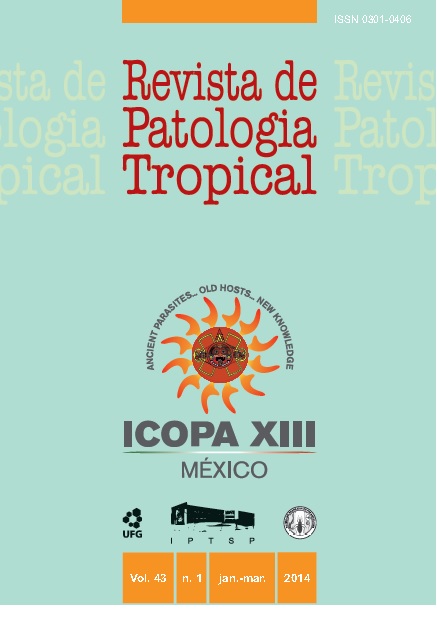ENTEROPARASITES AND OSTOMIZED INDIVIDUALS
DOI:
https://doi.org/10.5216/rpt.v43i1.29377Keywords:
Ostomy, helminths, nematodesAbstract
This study aimed to investigate the presence of infectious intestinal parasites in individuals undergoing enterectomy and enrolled in the Ostomy Program of the Department of Health Management, Health System (SUS), in the municipality of Pelotas, Brazil. An epidemiological questionnaire was applied to 71 individuals who participated in the survey, to assess demographic, social, and cultural effects on basic knowledge concerning enteroparasites. They also underwent fecal examinations by the Faust, Ritchie and Baermann-Moraes methods. The prevalence of monoparasitism carriers was 5.6%: Enterobius vermicularis larvae and eggs, Taenia sp. eggs and Strongyloides stercoralis larvae were diagnosed. As for knowledge about parasites, 69% of interviewees had general knowledge of the subject and 56.3% knew of the importance of hygiene for hands and food. However, 33.8% of respondents did not know of the necessary precautions for preventing intestinal parasites, and 50.7% of the respondents did not understand the real importance of the subject. There were no signs or symptoms that would indicate the presence of parasites in the patients. The results indicated the presence of helminths in individuals undergoing intestinal ostomy.Downloads
Downloads
Published
How to Cite
Issue
Section
License
The manuscript submission must be accompanied by a letter signed by all authors stating the full name and email address, confirming that the material has not been published or is under consideration for publication elsewhere, and agreeing to transfer copyright in all media and formats for Journal of Tropical Pathology. The authors will not be paid for published articles. They are solely responsible for the content of those articles, even if the Editor holds the right to adjust them to the norms of the journal.
The reviewers will not be paid for the peer review process.

